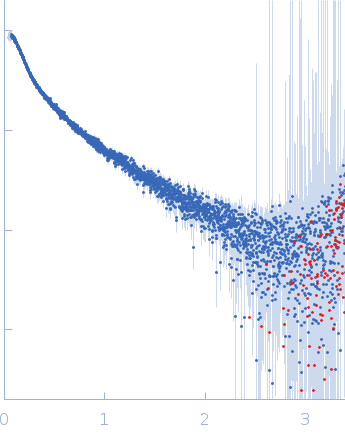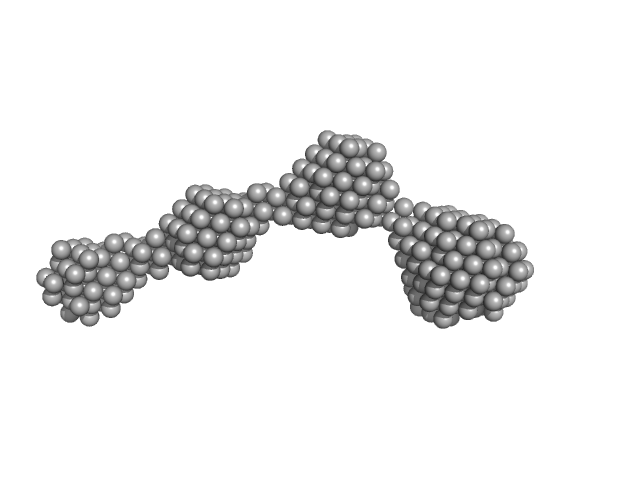|
Synchrotron SAXS data from solutions of BIK1 coiled-coil in 20 mM Tris-HCl pH 7.5, 500 mM NaCl, 2% glycerol, 1 mM DTT were collected on the B21 beam line at the Diamond Light Source (Didcot, UK) using a Eiger 4M detector at a sample-detector distance of 3.7 m and at a wavelength of λ = 0.09464 nm (I(s) vs s, where s = 4πsinθ/λ, and 2θ is the scattering angle). In-line size-exclusion chromatography (SEC) SAS was employed. The SEC parameters were as follows: A 50.00 μl sample at 6 mg/ml was injected at a 0.16 ml/min flow rate onto a Shodex KW404-4F column at 15°C. 37 successive 3.200 second frames were collected. The data were normalized to the intensity of the transmitted beam and radially averaged; the scattering of the solvent-blank was subtracted.
Note: The ab initio model displayed in this entry represents the bead-occupancy and volume-corrected shape obtained from the spatial alignment of several individual DAM models (DAMFILT) and does not reflect the fit to the displayed data.
|
|
 s, nm-1
s, nm-1
